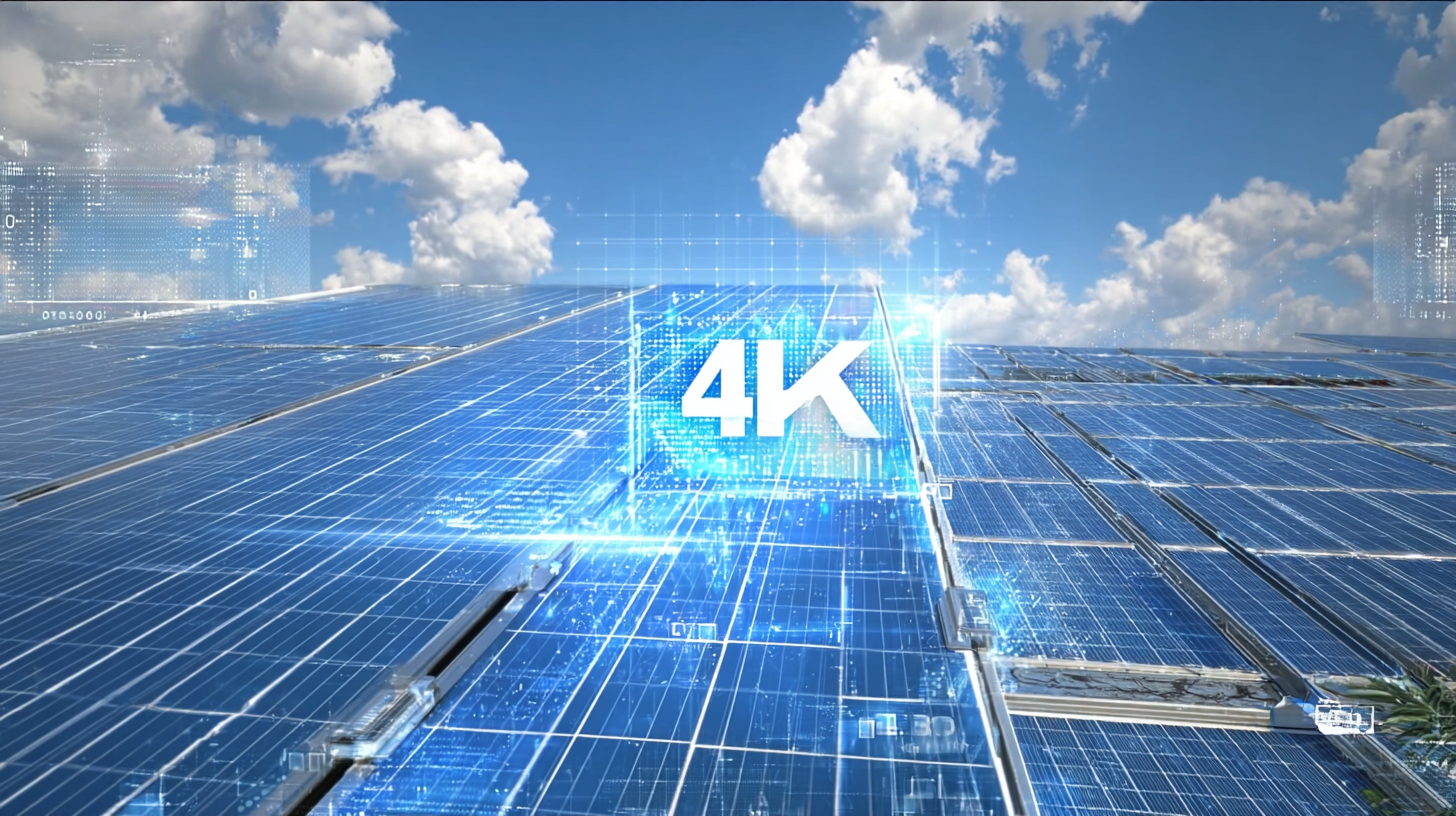As we advance towards 2025, the solar panel industry is on the verge of transformative growth, driven by innovative technologies and sustainable practices. According to a report by the International Renewable Energy Agency (IRENA), the global solar energy capacity is expected to reach over 3,000 GW by 2025, reflecting a compound annual growth rate of more than 20%. This surge is not only propelled by the increasing demand for renewable energy sources but also by significant advancements in solar panel efficiency and affordability. Emerging trends, such as bifacial solar panels and solar tracking systems, are set to revolutionize energy generation, making solar power more accessible and efficient. This blog will explore these exciting developments and provide a comprehensive guide to the cutting-edge solutions shaping the future of solar technology.

The solar panel technology landscape is rapidly evolving, with significant strides being made towards enhancing the efficiency of solar cells. Recent innovations have pushed the boundaries of conversion rates, surpassing the notable 25% mark. This leap in efficiency is pivotal, as it translates directly into more energy harvested per square meter, making solar energy increasingly viable for both residential and commercial applications. The integration of advanced materials, such as perovskites and tandem cells, is at the forefront of this progress, promising even greater performance in the near future.
When considering solar panel installations, homeowners should look for systems that leverage these innovative technologies. One tip is to explore products that utilize tandem solar cells, as they can significantly boost output compared to traditional panels. Additionally, check for warranties that cover these advanced technologies to ensure long-term performance.
As the industry gears up for 2025, staying informed about these advancements can help users make smarter choices. It's essential to consult expert reviews and seek out installations that include monitoring systems, allowing for real-time performance evaluations. This can be a game-changer in maximizing the benefits of your solar energy system.

Bifacial solar panels are rapidly gaining popularity as a leading solution in renewable energy, particularly for their potential in maximizing energy capture. Unlike traditional monofacial panels, bifacial panels can absorb sunlight from both sides, effectively increasing their overall efficiency. According to the latest report from the International Energy Agency (IEA), bifacial technology can boost energy generation by 10% to 20% when properly installed, especially in reflective environments such as sandy or snowy areas. This makes them an attractive option for both residential and commercial installations.
For those looking to invest in or upgrade to bifacial solar panels, here are a few tips: First, consider optimizing the installation height and angle to ensure both sides receive ample sunlight throughout the day. Additionally, choosing the right mounting system that reflects light can significantly enhance performance. The Solar Energy Industries Association (SEIA) highlights that by 2025, bifacial panels could dominate the solar market, driven by advancements in manufacturing and decreasing costs, thus providing a cost-effective alternative for energy generation.
Moreover, investing in high-quality bifacial modules not only enhances energy output but also ensures longer lifespan and durability. As reported by Wood Mackenzie, the global bifacial solar market is expected to reach 30 GW by 2025, illustrating a robust shift towards these innovative solutions. Pairing bifacial panels with energy storage systems can further optimize performance, allowing users to make the most of their solar investments.
| Feature | Description | Efficiency (%) | Cost (per Watt) | Market Growth Rate (%) |
|---|---|---|---|---|
| Bifacial Technology | Captures sunlight on both sides of the panel. | 20-30 | $0.50 - $0.70 | 15 |
| PERC Cells | Passivated Emitter and Rear Cell technology enhances efficiency. | 21-23 | $0.60 - $0.80 | 12 |
| Thin-Film Technology | Flexible and lightweight panels made from thin layers of photovoltaic material. | 10-15 | $0.40 - $0.60 | 8 |
| Integrated Solutions | Solar panels integrated with roofing materials. | 15-20 | $1.00 - $1.20 | 20 |
The integration of artificial intelligence (AI) and machine learning (ML) into solar panel technology is revolutionizing the way we optimize energy production. According to a report by the International Renewable Energy Agency (IRENA), AI applications in solar energy can increase efficiency by up to 20% through predictive maintenance and performance monitoring. By leveraging data analytics, AI can analyze real-time performance metrics and environmental conditions, allowing solar farms to adjust operations for maximum output.
Additionally, machine learning algorithms can enhance the design of solar panels by predicting how changes in material or structure can influence efficiency. A study by McKinsey indicates that the use of ML in solar technology could reduce costs by approximately 30% by 2025 through innovations in predictive modeling. This not only positions solar energy as a more viable option in combating climate change but also makes solar installations financially attractive to consumers and investors alike. As we approach 2025, the synergy of AI and ML will undoubtedly be a game-changer in the solar industry, driving sustained growth and innovation.

Perovskite solar cells are emerging as a game changer in renewable energy technology, offering numerous advantages over traditional silicon-based panels. One of the most noteworthy features of perovskite materials is their exceptional light absorption capabilities, allowing them to convert a greater percentage of sunlight into electricity. This increased efficiency not only enhances energy output but also minimizes the material requirements for solar panel production, making it a cost-effective solution for future installations.
Moreover, the flexibility and lightweight nature of perovskite solar cells open up new possibilities for integration into a variety of applications. From building-integrated photovoltaics to portable solar solutions, these innovative materials can be implemented in ways that traditional solar panels cannot. As research progresses and stability issues are addressed, we can expect to see perovskite technology increasingly adopted in large-scale projects by 2025, driving a significant shift towards cleaner and more sustainable energy options. The impact of these advancements extends beyond mere efficiency, promising a future where solar energy becomes more accessible and versatile for all.
This bar chart illustrates the projected efficiency of perovskite solar cells from 2019 to 2025. As the data indicates, there is a significant upward trend in efficiency, showcasing the potential advancements in solar technology and their impact on future installations.
As we look towards 2025, the advancements in
energy storage solutions are set to revolutionize
solar power utilization. A report by the
International Energy Agency (IEA) predicts that global energy
storage capacity will reach 600 GW by 2030,
with a significant share attributed to
solar energy systems. This surge is driven by technological
innovations in battery systems, such as lithium-sulfur and
solid-state batteries, which offer higher energy densities and improved
safety profiles compared to traditional
lithium-ion batteries.
Furthermore, integrating solar power with advanced
energy management systems is becoming essential for
maximizing efficiency. According to a study by
BloombergNEF, the market for energy storage in solar applications
is expected to exceed $20 billion by 2025.
Innovations such as artificial intelligence-driven energy management platforms
are enhancing grid stability and providing real-time data analytics to optimize energy consumption patterns.
This combined approach not only boosts solar efficiency but also plays a crucial role in achieving sustainability
goals, paving the way for a
greener, more reliable energy future.
